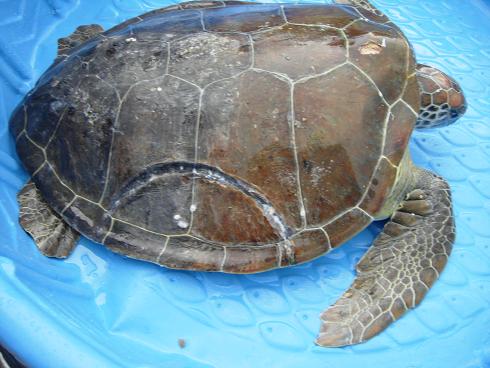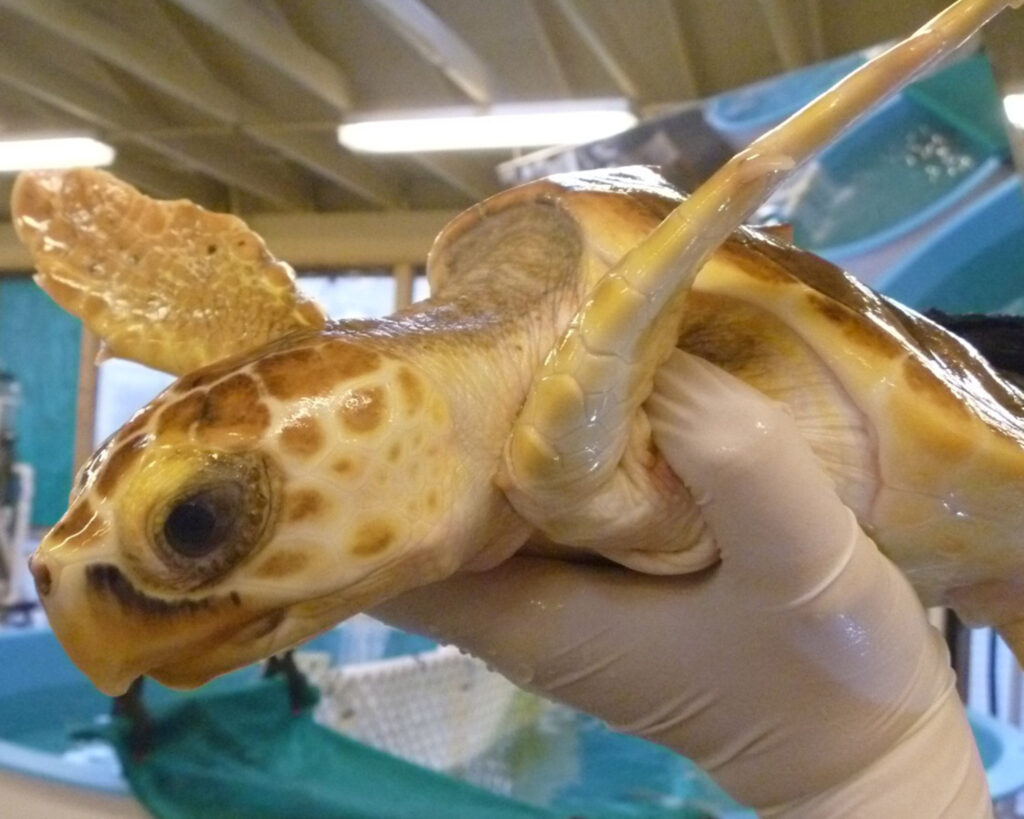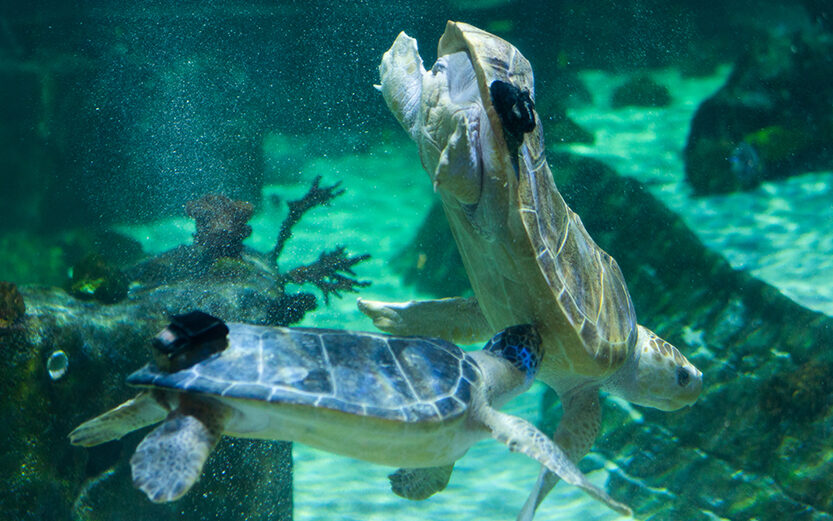How did our two sea turtles come to live at the Aquarium?
Tuesday, February 2, 2021 written by Leanna Read

Green, our Green sea turtle, was found in a canal in Key Largo, Florida in 2009 and was rescued by a sea turtle hospital. They found a bite wound on her carapace that was likely from a shark, and a second wound at the base of her neck that may have been caused by a boat strike. Her age is unknown.
From the results of an x-ray, the rescue team discovered that Green had an air pocket in her Gastro-intestinal tract, which would make it difficult for her to survive in the wild. Air pockets such as this disrupt a turtle’s ability to control their buoyancy and make swimming very difficult. The hospital in Florida was able to rehabilitate her from her other wounds, and then she was given a permanent home here with us, in Utah.

Gabi is the other sea turtle that you can see at the Aquarium. She is a Loggerhead sea turtle and was found in 2008 off the coast of Jacksonville, Florida when she was very little. Gabi was tangled in a bed of seaweed that is called sargassum, a common seaweed in Florida. She was very small and lethargic. X-rays showed a similar condition to Green: an air pocket in her gastro-intestinal tract. This is likely the reason she became tangled in the seaweed, and since this type of air pocket cannot be remedied, Gabi was given a safer, healthier life at the Aquarium.
In order to aid both of our sea turtles with their floating issues, we have attached little “backpacks” to their shells that can hold weights. The weights counteract the buoyancy of the air pockets and help them swim more naturally.

Sea turtles also require UV light in order to be happy and healthy. We treat Green and Gabi at least once a week with UV light. They also get regular veterinary visits which sometimes include blood work and CT scans to make sure their whole body remains healthy.
Outside of the Aquarium, sea turtles can hold their breath for several hours at a time, and they sleep by finding safe corners or crevices in the rocks where they can lodge themselves and avoid drifting.
Loveland Living Planet Aquarium is also supporting wild sea turtle populations by helping fundraise the Pawikan Project, which helps protect sea turtle hatchlings in the Philippines. Five of the world’s seven marine turtle species are found in the Philippines, known locally as the “Pawikan,” a term that refers to all local species including Green, Hawksbill, Olive Ridley, Loggerhead, and Leatherback turtles. Click below to learn more about how you can donate to the Pawikan Project and become an active participant in sea turtle rescues and conservation.

